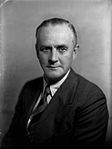United Kingdom general election, 1950
|
|
|||||||||||||||||||||||||||||||||||||||||||||||||||||||||||||||
|
|||||||||||||||||||||||||||||||||||||||||||||||||||||||||||||||
|
|||||||||||||||||||||||||||||||||||||||||||||||||||||||||||||||
|
|
|||||||||||||||||||||||||||||||||||||||||||||||||||||||||||||||
| Colours denote the winning party, as shown in the main table of results. (Map does not show results in Northern Ireland)
* Including Scottish Unionists, Ulster Unionists, and National Liberals. The National Liberals had united with the Conservatives at the constituency level in 1947. |
|||||||||||||||||||||||||||||||||||||||||||||||||||||||||||||||
|
|||||||||||||||||||||||||||||||||||||||||||||||||||||||||||||||
| 1935 election • MPs |
| 1945 election • MPs |
| 1950 election • MPs |
| 1951 election • MPs |
* Including Scottish Unionists, Ulster Unionists, and National Liberals. The National Liberals had united with the Conservatives at the constituency level in 1947.
The 1950 United Kingdom general election was the first ever general election to be held after a full term of a Labour government. The election was held on 23 February 1950. Despite polling over one and a half million votes more than the Conservatives, and receiving more votes than they had during the 1945 election, Labour obtained a slim majority of just five seats — a stark contrast to 1945, when they had achieved a 146-seat majority. Labour called another general election in 1951.
Significant changes since the 1945 general election included the abolition of plural voting by the Representation of the People Act 1948, and a major reorganisation of constituencies by the House of Commons (Redistribution of Seats) Act 1949. Eleven new English seats were created and six abolished, and there were over 170 major alterations to constituencies across the country. Turnout increased to 83.9%, the highest turnout in a UK general election under universal suffrage. It was also the first election to be covered on TV, although the footage was not recorded.
Both the Conservative and Labour parties entered the campaign positively. The Conservatives, having recovered from their heavy election defeat in 1945, accepted most of the nationalisation that had taken place under the Attlee government, which included the NHS and the mixed economy. The campaign essentially focused on the possible future nationalisation of other sectors and industries, which was supported by the Labour party, and opposed by the Tories. The Liberals essentially viewed the struggle between the two parties on this issue as a class struggle. The Liberal Party fielded 475 candidates, more than at any election since 1929. Liberal leader Clement Davies felt that the party had been at a disadvantage at the 1945 election when they ran fewer candidates than needed to form a government. Davies arranged for the cost of running extra candidates to be offset by the party taking out insurance with Lloyd's of London against more than 50 candidates losing their deposits. In the event, a total of 319 Liberal candidates lost their deposits, a record number until 2015, when candidates for the Liberal Democrats lost 335 deposits in the general election held in May.
...
Wikipedia




